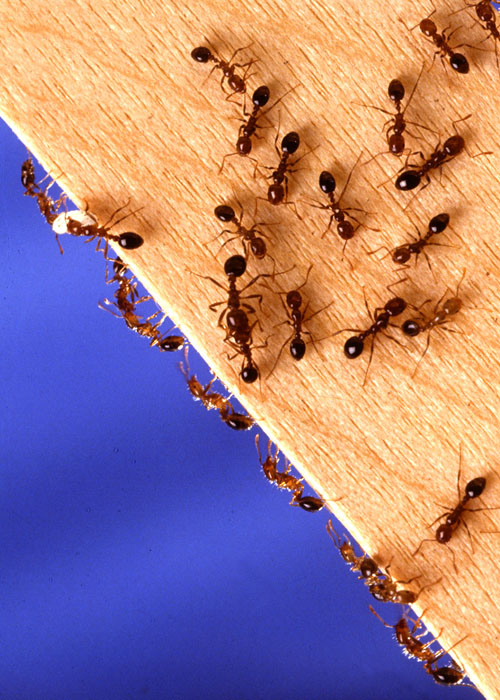Whether you have a well-manicured lawn or a wild preserve, almost every landscape in Georgia shares one feature: fire ants.
These stinging insects can ruin even the best backyard cookout or game of catch. But homeowners need to take care not to let their rage against fire ants blind them to the dangers of some insecticides.
Dan Suiter, professor of entomology at the University of Georgia College of Agricultural and Environmental Sciences, researches fire ant control methods and wants people to start reading the labels on many of the products sold to control ants.
“Everyone believes that if they’re going to sell it at any of the various home-supply stores, that it’s safe — that there’s no way that it will be able to hurt the environment,” Suiter said. “That’s not true. You have to read the labels.”
When it comes to fire ant control, there are a few common types of chemicals that are used both in over-the-counter and professional pest control products.
First, there are insecticides that contain bifenthrin, a pyrethroid insecticide that is nonselective and capable of killing any insect it comes in contact with. Suiter recommends homeowners avoid these products for outdoor use because of the risk that they could leech into nearby waterways or kill pollinating insects.
Many pyrethroid insecticides are formulated as heavy granulars that fall to the ground and sink into the thatch, where they dissolve, leaving behind the insecticide. Granular formulations protect foraging pollinators because they do not come in contact with flowers. However, they are only safe if gardeners read the label associated with the product and use the product correctly. Granular formulations should never be allowed to remain on hard surfaces, as they may make their way to streams where the pyrethroids are highly toxic to fish and other aquatic life.
To have the least ancillary impact from fire ant treatment, Suiter recommends using fire ant baits — sold under names like Amdro.
The bait is made up of the active ingredient dissolved in an oil that’s been applied to an inert carrier. The ants remove the oil from the grit and bring it back to the mound where they share it with the other ants. Baits should never be watered in after application.
Used correctly, ant bait products are the most effective and safest ways to control fire ants, Suiter said.
Gardeners looking to treat for fire ants may want to purchase a hand spreader to sprinkle the bait around their landscape while walking in a grid pattern.
“You may want to purchase a new spreader for spreading ant bait because the lingering odor from any fertilizer or other lawn chemicals could keep the ants from eating the bait,” Suiter said.
Ants are very sensitive to the odor of the bait, which turns rancid relatively quickly and becomes repellent to the ants. Gardeners should buy the smallest package of bait they can and use it all within one or two months, preferably all at once.
Also be sure to apply the bait during warm, dry afternoons to ensure that the ants will be out foraging. Rainfall will keep the bait from being effective, Suiter said.
For more information about fire ant control, see UGA Cooperative Extension Bulletin 1191, “Managing Imported Fire Ants in Urban Areas,” at extension.uga.edu/publications.








